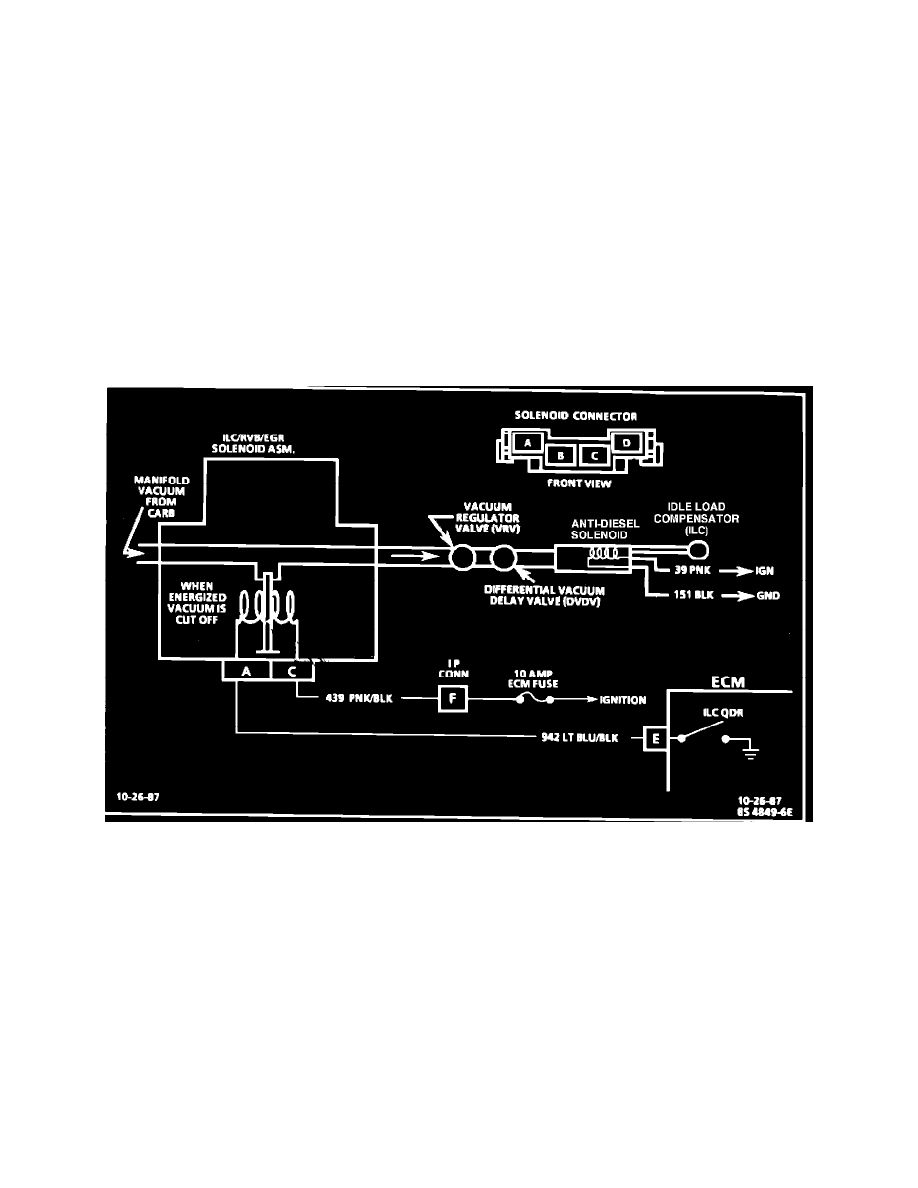Custom Cruiser V8-307 5.0L (1987)

Idle Speed/Throttle Actuator - Electronic: Technical Service Bulletins
Engine Controls - Updated Idle Load Compensator Chart
NUMBER:
88-T-12
DATE:
December 4, 1987
SECTION:
6E1
SUBJECT
SERVICE MANUAL REVISION - CHART C-2C
"IDLE LOAD COMPENSATOR (ILC) CHECK"
1986 THROUGH 1988 CUTLASS SUPREME
MODELS/YEARS CUTLASS SUPREME CLASSIC, AND CUSTOM CRUISER MODELS EQUIPPED WITH THE LV2 V-8 (VIN CODE Y)
ENGINES
The attached Idle Load Compensator chart replaces the chart in Section 6E1-C2 of the 1986 and 1987 Chassis Service Manuals and the 1988 New
Product Service Manual.
The C-2C facing page artwork has been changed to show all the components between the ILC/RVB/EGR solenoid assembly and idle load compensator.
The C-2C diagnostic chart has been reworked to more thoroughly diagnose any failure of components within the ILC vacuum and electrical system.
CHART C-2C
IDLE LOAD COMPENSATOR (ILC) CHECK - 5.0L (VIN Y) (CARB)
Circuit Description:
The idle load compensator (ILC) is mounted on the carburetor and is used to control various low engine rpm conditions. The ILC uses a spring loaded
vacuum sensitive diaphragm whose plunger extends when vacuum is not present. Vacuum to the ILC is controlled by the ECM through the ILC/RVB/
EGR solenoid assembly. When the ECM turns "ON" the ILC solenoid assembly, vacuum is cut "OFF" to the ILC. Vacuum is regulated through the VRV
and delayed under high load conditions (checked) by the DVDV and through the Anti-diesel solenoid (ADS). The ADS is energized when the IGN is
turned on, allowing vacuum to the ILC, and turned "OFF" when the IGN is "OFF". This traps vacuum to the ILC, keeping the plunger retracted so the
engine can shut down without dieseling.
